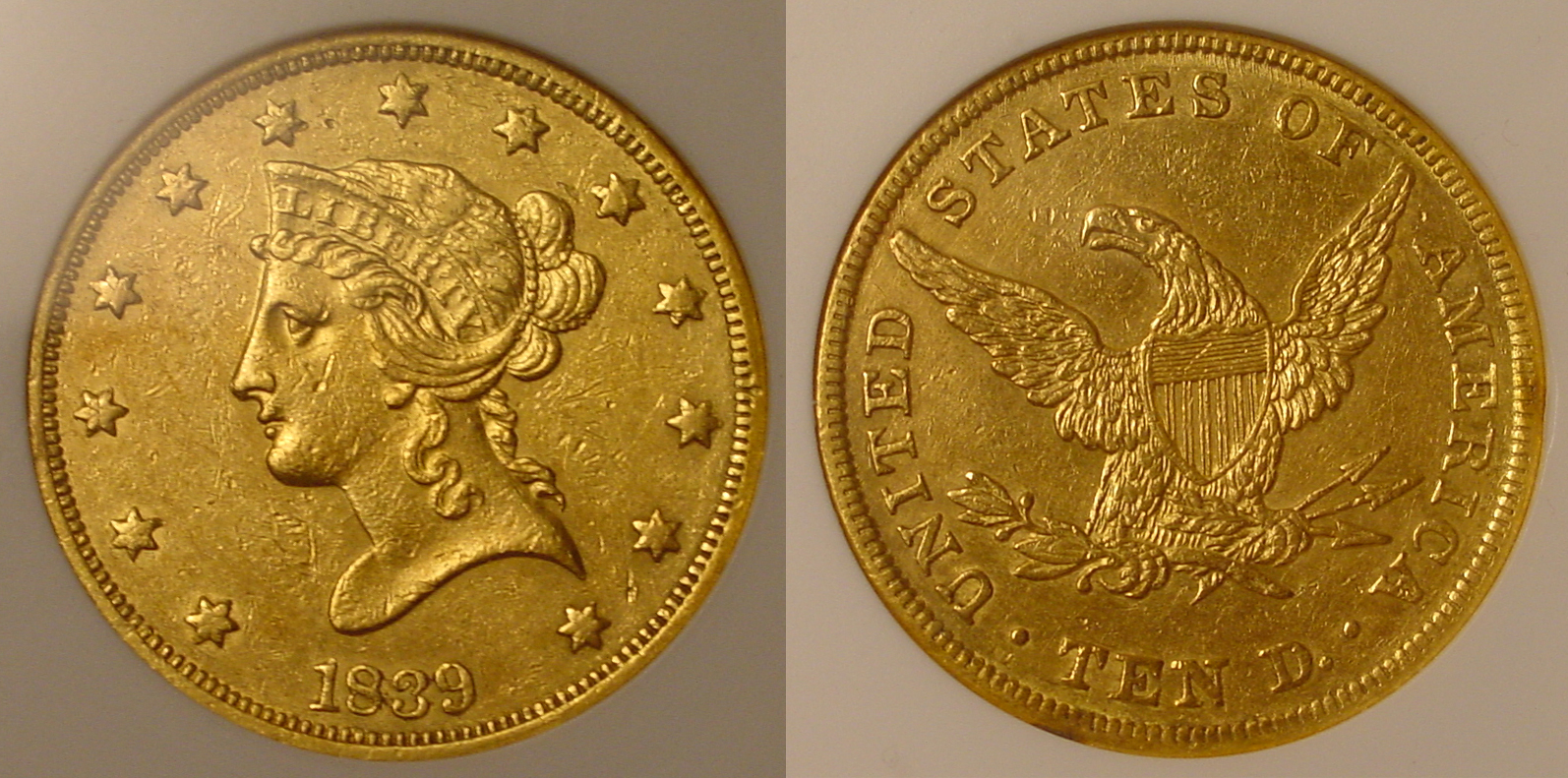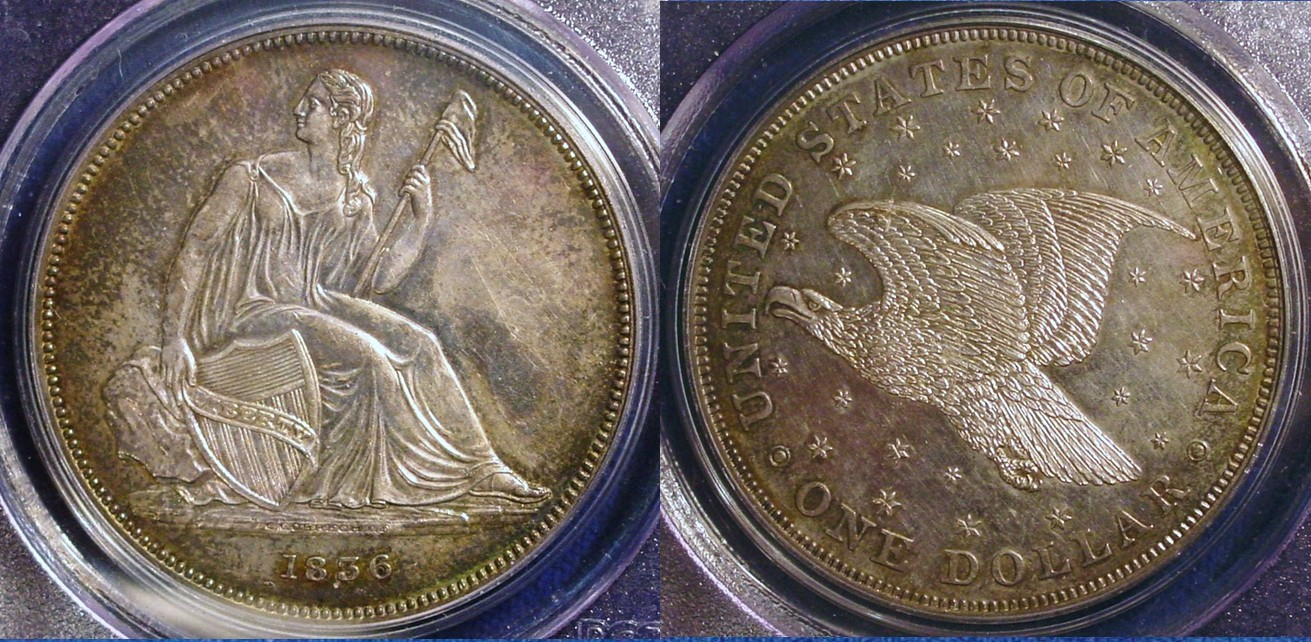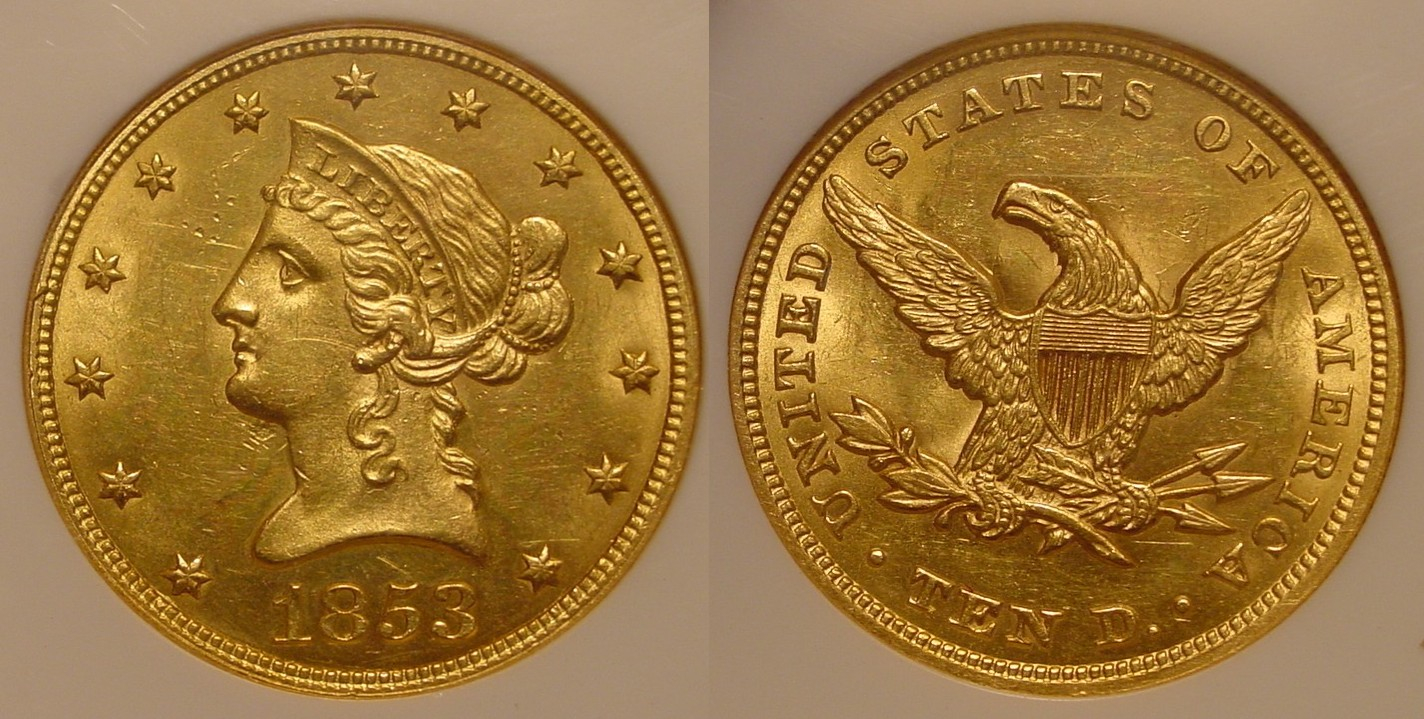Howdy, Stranger!
It looks like you're new here. If you want to get involved, click one of these buttons!
Quick Links
The U.S. Mint Re-introduces the $10 gold piece
I had thought about buying an example of this minor, and not often recognized gold type coin for a while. This piece represents an interesting piece of U.S. coinage history.

In 1804, President Thomas Jefferson suspended the coinage of the silver and the gold eagle or $10 gold piece. The reason was that he wanted to stem the flow of silver and gold from the U.S. economy. Jefferson thought that these large silver and gold pieces facilitated that flow. Little did he know that the United States would not issue any examples of these United States flagship coins for more than 30 years.
After the mint operation moved to the second Philadelphia on January 1, 1831, the mint turned its attention to modernizing its production processes and re-introducing the dollar and $10 gold piece.
The dollar returned in 1836. It was the Gobrecht Dollar named after the man who designed it, Christian Gobrecht. Gobrecht was sharing the chief engraver's salary with William Kneass who a suffered a partially debilitating stroke. These coins were struck in 1836 and '37 and were restruck in the 1850s.

Gobrecht created a design for the $10 gold coin in 1838. With a mintage of 7,200 coins and a low survival rate, the 1838 eagle is a very scarce coin. Gobrecht used the same design at the beginning of 1839. These coins are overdate pieces with a "9" over the "8 and are known as the "type of 1838." which the coin shown at the top of this post. With a mintage of 25,801, this coin is a bit more common, but still hard to find. Most of the survivors fall in the VF to EF grades. AU graded pieces and most especially strict Mint State pieces are quite rare.
Apparently the mint officials were not totally satisfied with Golbrecht's first design. He modified it later in 1839. The most obvious change was that Ms. Liberty's ear was now uncovered. This design, with some minor changes, was current until 1907 when the St. Gaudens designs changed it. The biggest change was the addition of the motto, "In God we trust," to the reverse. Here is an example of the Liberty Head which replaced Gobrecht's first design.


In 1804, President Thomas Jefferson suspended the coinage of the silver and the gold eagle or $10 gold piece. The reason was that he wanted to stem the flow of silver and gold from the U.S. economy. Jefferson thought that these large silver and gold pieces facilitated that flow. Little did he know that the United States would not issue any examples of these United States flagship coins for more than 30 years.
After the mint operation moved to the second Philadelphia on January 1, 1831, the mint turned its attention to modernizing its production processes and re-introducing the dollar and $10 gold piece.
The dollar returned in 1836. It was the Gobrecht Dollar named after the man who designed it, Christian Gobrecht. Gobrecht was sharing the chief engraver's salary with William Kneass who a suffered a partially debilitating stroke. These coins were struck in 1836 and '37 and were restruck in the 1850s.

Gobrecht created a design for the $10 gold coin in 1838. With a mintage of 7,200 coins and a low survival rate, the 1838 eagle is a very scarce coin. Gobrecht used the same design at the beginning of 1839. These coins are overdate pieces with a "9" over the "8 and are known as the "type of 1838." which the coin shown at the top of this post. With a mintage of 25,801, this coin is a bit more common, but still hard to find. Most of the survivors fall in the VF to EF grades. AU graded pieces and most especially strict Mint State pieces are quite rare.
Apparently the mint officials were not totally satisfied with Golbrecht's first design. He modified it later in 1839. The most obvious change was that Ms. Liberty's ear was now uncovered. This design, with some minor changes, was current until 1907 when the St. Gaudens designs changed it. The biggest change was the addition of the motto, "In God we trust," to the reverse. Here is an example of the Liberty Head which replaced Gobrecht's first design.



Comments
I would like to get an example of the 1839/8 $10 at some point. It's a tough type!
In August 1834, the mint introduced Classic Head gold coinage. The ratio between gold and silver coins was increased from 15 to 1 to 16 to 1. The gold pieces stayed circulation and mostly in the United States.
Were the ms 1838 tens really made from melted down British sovereigns? I have read this for years though not sure if correct.
I was able to acquire my 1838 6 years ago.
For those who are not familiar with the coins we are talking about, here are some examples.
Pre August 1834, "old tenor" $5 gold piece. And no, this coin will never get a CAC sticker.
1834 Classic Head $5 gold piece. There were thoughts of dating this piece "August 1834," but that idea did not come to fruition. This is the very scarce 1834 crosslet 4 variety. And no this will note get a CAC sticker because it's way over graded. Sometimes you have to bite the bullet to fill a hard to find spot.
And here is an 1826 British gold sovereign featuring George IV.